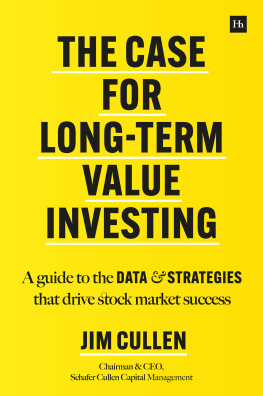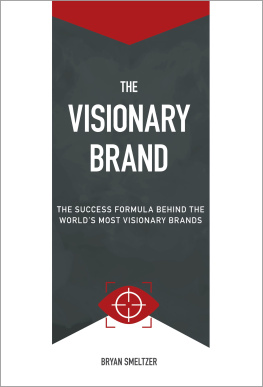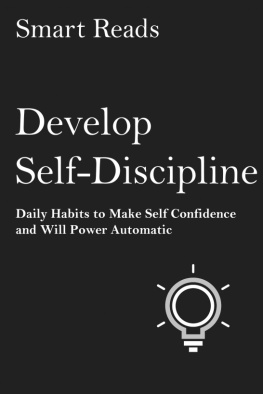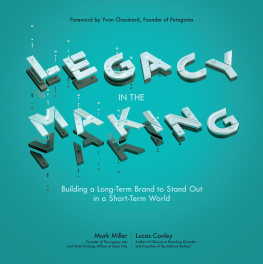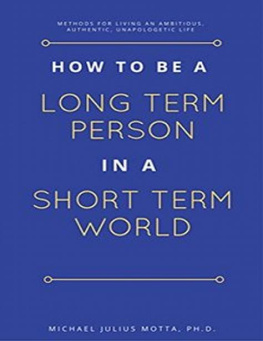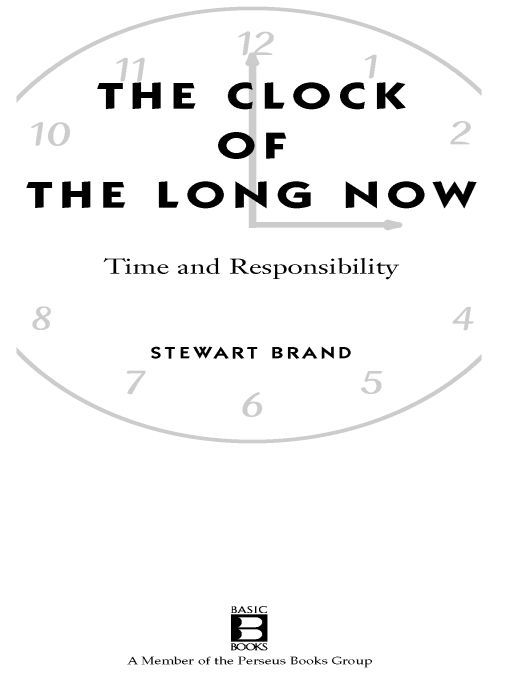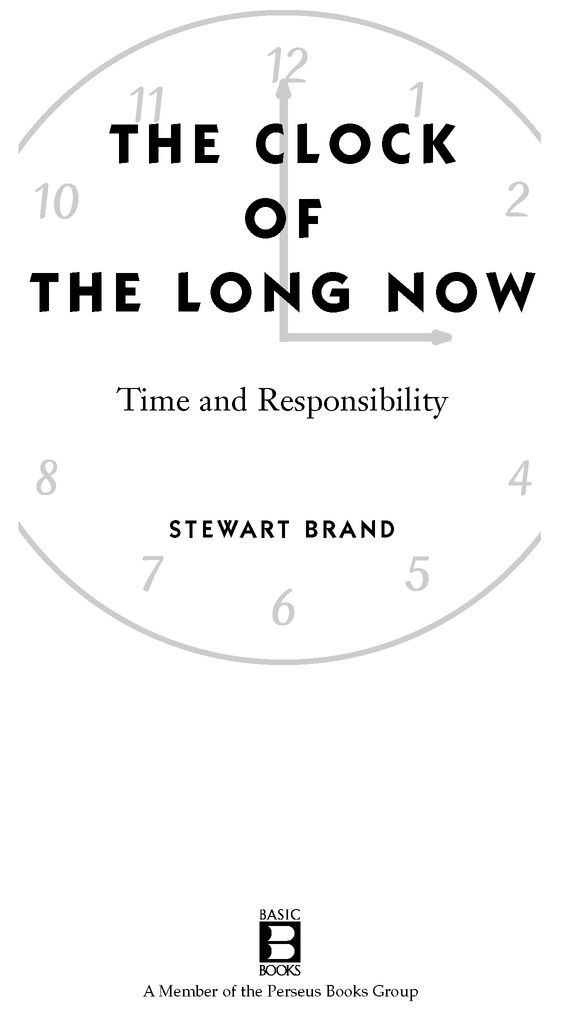The device is a Clock, very big and very slow. For the purposes of this book it is strictly notional, a Clock of the mind, an instrument for thinking about time in a different way. As it happens, such a Clock is in fact being built. The builders are finding that the very idea of the Clockwhy to build it, how to build itforces their thinking in interesting directions; among other things, toward long-term responsibility. Since it works for them, please consider yourself one of the Clocks builders. It wont take long to catch up. Heres a project summary from late 1998, complete with preamble:
Civilization is revving itself into a pathologically short attention span. The trend might be coming from the acceleration of technology, the short-horizon perspective of market-driven economics, the next-election perspective of democracies, or the distractions of personal multitasking. All are on the increase. Some sort of balancing corrective to the short-sightedness is neededsome mechanism or myth that encourages the long view and the taking of long-term responsibility, where the long term is measured at least in centuries.
What we propose is both a mechanism and a myth. It began with an observation and idea by computer designer Daniel Hillis, who wrote in 1993:
When I was a child, people used to talk about what would happen by the year 2000. Now, thirty years later, they still talk about what will happen by the year 2000. The future has been shrinking by one year per year for my entire life.
I think it is time for us to start a long-term project that gets people thinking past the mental barrier of the Millennium. I would like to propose a large (think Stonehenge) mechanical clock, powered by seasonal temperature changes. It ticks once a year, bongs once a century, and the cuckoo comes out every millennium.
Such a clock, if sufficiently impressive and well engineered, would embody deep time for people. It would be charismatic to visit, interesting to think about, and famous enough to become iconic in the public discourse. Ideally, it would do for thinking about time what the photographs of Earth from space have done for thinking about the environment. Such icons reframe the way people think.
Hillis, who developed the massive parallel architecture of the current generation of supercomputers, has devised the mechanical design of the Clock and is now building the prototype. Its works consist of an ingenious binary digital-mechanical system that has precision equal to one day in twenty thousand years, and it self-corrects by phase locking to the noon sun. For the way the eventual Clock is experienced (its size, housing, etc.), we expect to keep proliferating design ideas for a while. The prototype Clock, only eight feet tall, is shaping up beautifully in Monel alloy, Invar alloy, tungsten carbide, metallic glass, and synthetic sapphire.
The Clock project became the Clock/Library with the realization of the need for content to go along with the long-term context provided by the Clocka library of the deep future, for the deep future. The Clock/Library could take care of kinds of information deemed especially useful over long periods of time, such as minding extremely long-term scientific studies, or accumulating a Responsibility Record of policy decisions with long-term consequences.
To deliver mythic depth, the Clock/Library needs to be a remarkable facility at a remarkable location. High deserts are attractive for their broad horizons and high-preservation climate, if the specific location is not too remote for easy access worldwide. City sites offer high visibility but are harder to protect over centuries. Our strategy is to develop a city Clock/Library firstfor visibilityand then a desert Clock/Libraryfor longevity. Before both comes a World Wide Web site (at www.longnow.org).
In addition to its mythic core facility the Clock/Library as a cultural tool may need to be widely dispersedon the Net, in publications and distributed services, and at various locations. The point, after all, is to explore whatever may be helpful for thinking, understanding, and acting responsibly over long periods of time. Manifestations of the overall project could range from fortune cookies to theme parks. For now, we will build an astonishing Clock and a unique Library and see what develops from there.
Who is we? The Long Now Foundation was established in 1996 to foster long-term responsibility. The founding board is Daniel Hillis (co-chair), Stewart Brand (co-chair), Kevin Kelly, Douglas Carlston, Peter Schwartz, Brian Eno, Paul Saffo, Mitchell Kapor, and Esther Dyson. Hillis created Thinking Machines Inc. and its supercomputer, the Connection Machine, and is now a Fellow at Disney. Brand began the Whole Earth Catalog and co-founded Global Business Network. Kelly is executive editor of Wired magazine and author of Out of Control. Carlston co-founded Broderbund Software. Schwartz is chairman of Global Business Network and author of The Art of the Long View. Eno is a musician, music producer, and artist. Saffo is spokesman for Institute for the Future. Kapor founded Lotus and co-founded the Electronic Frontier Foundation. Dyson created and runs Release 1.0, the leading computer industry newsletter.
The present version of the Clock/Library scheme has grown from three years online conversation among the board members. Brian Eno proposed the long now as what we are aiming to promote. Peter Schwartz suggested 10,000 years as the appropriate time envelope for the project: 10,000 years ago was the end of the Ice Age and beginning of agriculture and civilization; we should develop an equal perspective into the future. Douglas Carlston noted that the institution to maintain this project will be as much of a design challenge to last one hundred centuries as the Clock or the Library.
As of autumn 1998 The Long Now Foundation has an executive director (Alexander Rose), two staffers, an office at the San Francisco Presidio, and nonprofit status. The foundation is developing its funding, the web site, the working prototype of the Clock, small conferences on subjects such as Managing Digital Continuity (that one was at the Getty Center in Los Angeles, February 1998), conception of the Library and its initial services, and locations to build.



